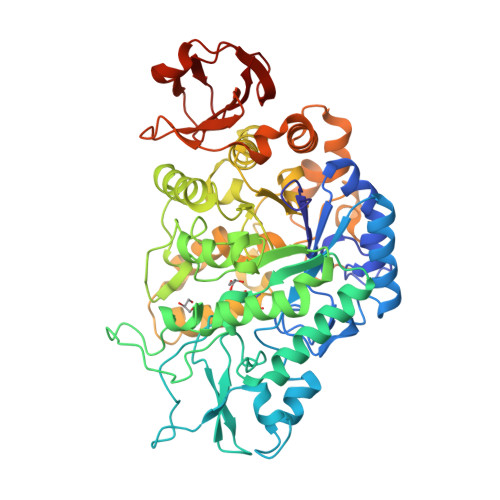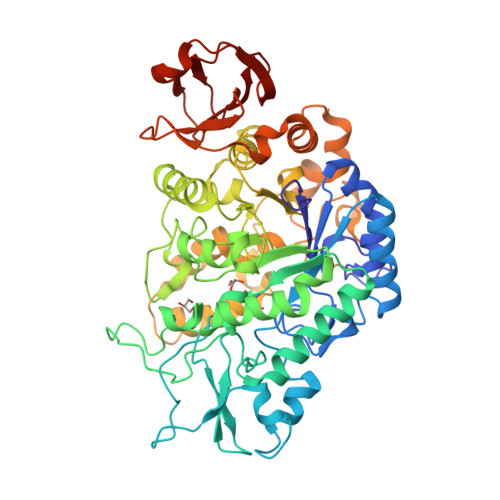Change in heat capacity for enzyme catalysis determines temperature dependence of enzyme catalyzed rates.
Hobbs, J.K., Jiao, W., Easter, A.D., Parker, E.J., Schipper, L.A., Arcus, V.L.(2013) ACS Chem Biol 8: 2388-2393
- PubMed: 24015933
- DOI: https://doi.org/10.1021/cb4005029
- Primary Citation of Related Structures:
4M56, 4M8U, 4MAZ, 4MB1 - PubMed Abstract:
The increase in enzymatic rates with temperature up to an optimum temperature (Topt) is widely attributed to classical Arrhenius behavior, with the decrease in enzymatic rates above Topt ascribed to protein denaturation and/or aggregation. This account persists despite many investigators noting that denaturation is insufficient to explain the decline in enzymatic rates above Topt. Here we show that it is the change in heat capacity associated with enzyme catalysis (ΔC(‡)p) and its effect on the temperature dependence of ΔG(‡) that determines the temperature dependence of enzyme activity. Through mutagenesis, we demonstrate that the Topt of an enzyme is correlated with ΔC(‡)p and that changes to ΔC(‡)p are sufficient to change Topt without affecting the catalytic rate. Furthermore, using X-ray crystallography and molecular dynamics simulations we reveal the molecular details underpinning these changes in ΔC(‡)p. The influence of ΔC(‡)p on enzymatic rates has implications for the temperature dependence of biological rates from enzymes to ecosystems.
Organizational Affiliation:
Department of Biological Sciences, Faculty of Science and Engineering, University of Waikato , Hamilton 3240, New Zealand.



















